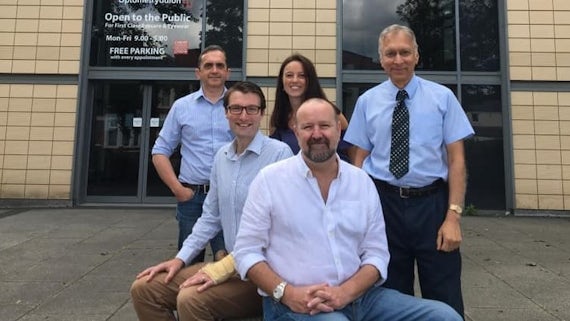£2.4 million grant for pioneering corneal study
15 Awst 2019

The Medical Research Council (MRC) has awarded Cardiff University’s School of Optometry and Vision Sciences a grant valued at £2.4 million for a large scale study on the cornea, which is the transparent window at the front of the eye and its main focusing element.
The aim of the research is to develop new technologies and techniques to better understand the function of the cornea and other collagen rich tissues. The research will also look to develop novel therapeutic strategies for the treatment of connective tissue disorders including developmental abnormalities, disease and abnormal healing processes.
It is the fourth consecutive time that a team of researchers from the Structural Biophysics Group within the School has received a five-year MRC programme grant for the study of the cornea, which is unprecedented in the UK.
The research will be led by Professor Keith Meek and his team of vision sciences researchers at the School of Optometry and Vision Sciences comprising Dr Sally Hayes, Dr Phil Lewis, Dr James Bell, and Professor Andrew Quantock. The team will also work with leading researchers throughout the UK and in several other countries including Japan, Czech Republic, USA, France, Canada and Brazil to achieve their aims.
Professor Meek, who is also head of the Structural Biophysics Group said: “We are very proud to have received our fourth consecutive MRC programme grant. To be competitively funded alongside research in much higher profile areas of medical research is a remarkable achievement, and for the MRC to rank our proposal so highly in the area of cell and molecular biology was the icing on the cake.”
Describing the research, Professor Meek added: “This research will play a leading international role in developing better treatments for corneal diseases, as well as pushing forward our basic scientific research to understand how structure drives function in this tissue. As the cornea is an excellent model system for connective tissues more generally, and by collaborating with other groups around the world, we can also use our new techniques to aid understanding of function/dysfunction in other parts of the body.”
Part of the project will involve working with scientists at the Diamond Light Source synchrotron to develop facilities for groups studying a number of other connective tissue disorders to be able to measure the instantaneous molecular response of these tissues to different types of load.
The team will also continue to run, on behalf of the ophthalmological community, the UK Cross-linking Consortium to drive towards the best possible treatment for the corneal disease keratoconus.





